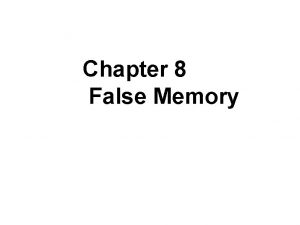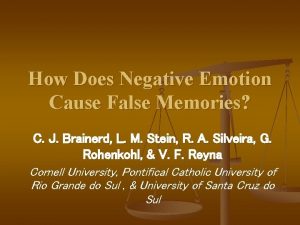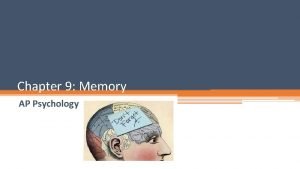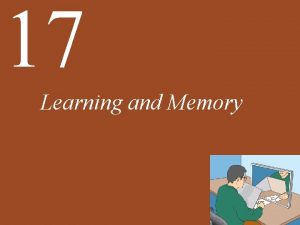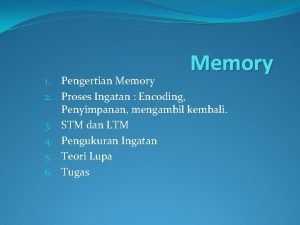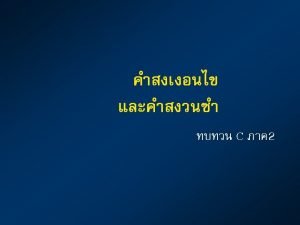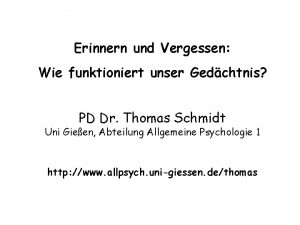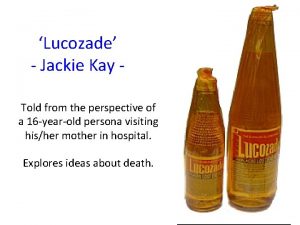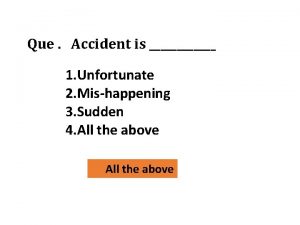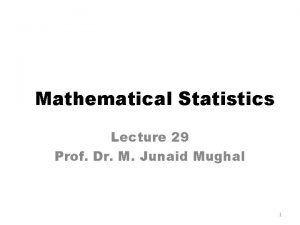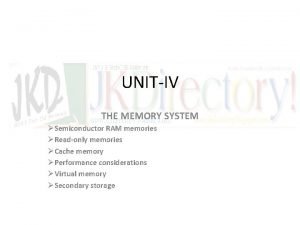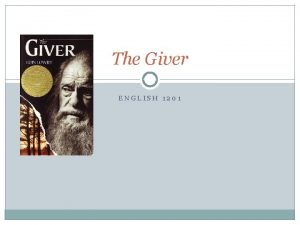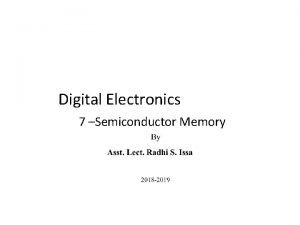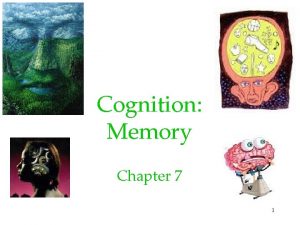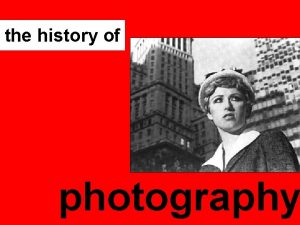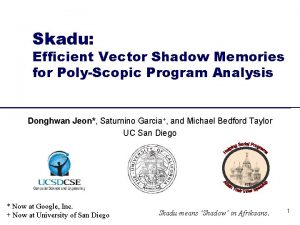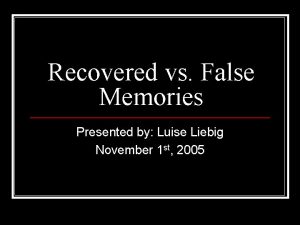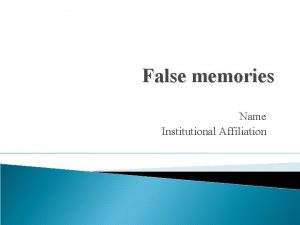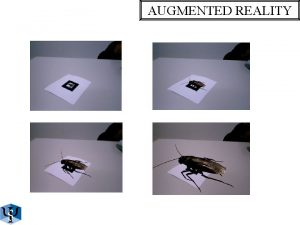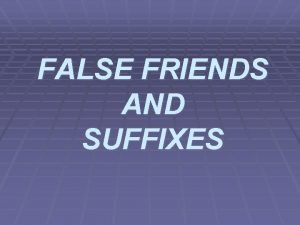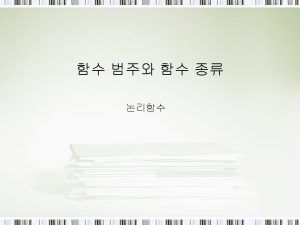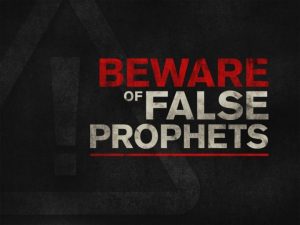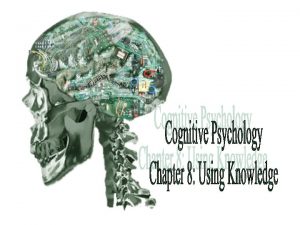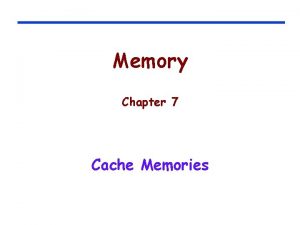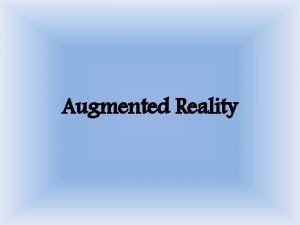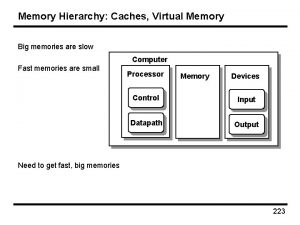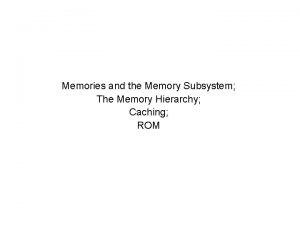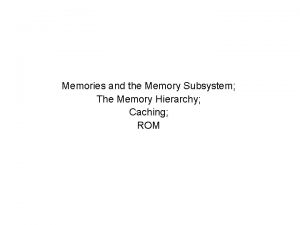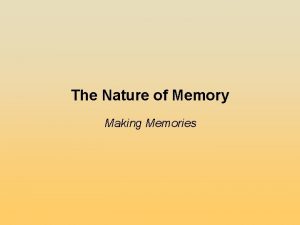Chapter 8 False Memory Recovered Memories The Reality































- Slides: 31

Chapter 8 False Memory

Recovered Memories: The Reality of Repression Recovered memories: Memories, typically of traumatic experiences that have been forgotten to be retrieved later. Loftus: No such thing as recovered memories. Current thinking: Some recovered memories are real, but many may be false.

Recovered Memories: The Reality of Repression Williams (1995) landmark study: Examined women with a documented history of abuse (abuse ranging from 1 -12 years of age) 12% of the women did not remember the abuse 16% of women reported that, although they remembered the abuse at the time of the interview, there was a time when they had forgotten about the abuse I appears that “forgetting is real? !”

Recovered Memories: The Reality of Repression Arguments against Williams (1995): Methods, Analysis True that these females were abused of children But memories could be due to reconstructive memory (they heard about it). False memories tend to be vague, more to do with thought processes, and less emotional Recovered memories: Spontaneous, triggered by a cue, highly emotional, and more sensory detail, correlated with documented histories of abuse

Mechanisms of Repression and Recovery Repression: Forgetting of highly-emotional memories, usually from childhood.

Mechanisms of Repression and Recovery Failure-to-rehearse: because memories of childhood trauma are highly negative, often private, and potentially embarrassing, they are likely to be seldom rehearsed. Retrieval suppression: People may deliberately force themselves to not remember the item.

Mechanisms of Repression and Recovery Smith and Moynan (2008): Examined the failureto-rehearse hypothesis. Used a retrieval bias procedure: Some information is easier to recall than other information. Retrieval bias can be induced by requiring a participant to retrieve certain information (i. e. , examples of fish). This makes the fish information easier to retrieve, but also makes it more difficult to retrieve the other categories.

Mechanisms of Repression and Recovery Participants studied a list of categorized lists. For each list, participants saw category labels (fish) & many exemplars (salmon, trout) Participants wrote down the word and made judgments as to whether exemplar was a good category fit (salmon is a good fit of category fish) Three lists were the critical lists used to induce forgetting. Other lists were filler lists

Mechanisms of Repression and Recovery The 3 critical lists composed of word lists designed to elicit emotional responses (curse words, deadly diseases), and a neutral list (tools). Fillers were all neutral categories (fish). The task was incidental (to reflect what happens in real life). (SEE figure 8. 4)

Smith and Moynan (2008) Forget critical words by rating fillers in terms of judgments of pleasantness of the fillers Recall as many categories as possible from the initial phase Use categories as cues (fish) to remember exemplars (salmon) Rating the fillers prevent rehearsal of critical stimuli (curse, disease) & Retrieval bias (toward the fillers)

Smith and Moynan (2008)

Smith and Moynan (2008) In the “forget” condition (verbal filler task), participants were much less likely to recall the category names of the critical emotional items than they were in the control condition (nonverbal task). For the category “diseases, ” the level of category recall fell from over 20% in the control condition to just about 2% in the “forget” condition. That is, only 2% of participants recalled the category name “disease” in the condition in which the filler lists received semantic practice.

Smith and Moynan (2008) Results similar to Repression and recovery: 1. A large number of neutral categories and two categories that were emotional and negative in nature (diseases, curse words). 2. Neutral categories like a normal childhood shattered occasionally by an abusive event (the negative emotional categories). 3. Then, in the “forget, ” condition, the neutral categories are rehearsed (as we tell stories of the positive events of childhood) but the emotional critical categories are not rehearsed (as some individuals and families may steadfastly refuse to discuss the abuse and its consequences). 4. Then, when people are asked to recall the categories (or remember the important events of their lives), they are good at remembering the practiced categories but often fail to remember the critical categories (that is, the abuse). 5. Method potentially explains why repressed memories may be recovered in therapy, as therapy may provide just the right retrieval cues.

Anderson and Green (2001) Active suppression of the retrieval unwanted memories. People may actively work to push an unpleasant memory out of consciousness, eventually leading to the event being forgotten until the appropriate retrieval cue is provided.

False Memories and Legal Psychology Eyewitness testimony Cognitive Interview

The Misinformation Effect Originally developed by Elizabeth Loftus Presenting post-event misinformation about a witnessed event can obscure, change, or degrade the memory of the original event.

Effects of Wording on Memory of an Accident Can memory be influenced/reconstructed based on how a question is asked? Changing the article from “a” (indefinite) to “the”(definite) makes a difference. “the” = more concrete, THE broken glass” “a” = less concrete, no relationship, (any glass)

Loftus (1975) Experiment 1: 150 subjects saw film of a five-car chain reaction accident that occurred when a driver RAN THROUGH a STOP sign into oncoming traffic. Accident took 4 seconds and the entire film took less than one minute.

Loftus (1975) Results After the movie: Group 1: Questionnaire asked: How fast was car A (car that ran stop sign) going when it ran the STOP SIGN? Group 2: Questionnaire asked: How fast was car A going when it TURNED RIGHT?

Loftus (1975) Results Experiment 1: Group 1: 53% reported a STOP sign Group 2: only 35% of these subjects mentioned a STOP SIGN!

Loftus (1975) Experiment 2: Designed to understand FALSE information in questions that could cause witnesses to reconstruct their memory of an event to include objects that were not there.

Loftus (1975) Experiment 2: 150 subjects watched short video of accident involving a WHITE sports car and then answered questions about the content of the video Group 1: How fast was the white sports car going when it passed the barn while traveling along the country road? Group 2: How fast was the white sports car going while traveling along the country road?

Loftus (1975) Results for Experiment 2: Group 1: 17. 3% reported seeing a BARN in the movie Group 2: 2% reported seeing a BARN in the movie

Loftus (1974) How the Choice VERB changed participant's responses (Leading questions and Memory Distortions) Subjects saw a film of a car accident Subjects were asked: About how fast were the cars going when the contacted each other? About how fast were the cars going when they smashed each other?

Loftus and Palmer (1974) Subjects' speed estimates depended on the question: How fast were the cars going when they smashed each other? 41 MPH How fast were the cars going when they collided each other? 39 MPH How fast were the cars going when they bumped each other? 38 MPH How fast were the cars going when they hit each other? 34 MPH How fast were the cars going when they contacted each other? 32 MPH

Loftus (1974) A week later: higher % of subjects that heard the verb SMASHED reported seen BROKEN GLASS Less % of subjects that heard the verb CONTACTED reported BROKEN GLASS

Explanations of Misinformation Effect The trace-impairment view: Misinformation distorts or alters the memory for the original event. Also called the “blending” view because the new memory is a blending of the original event and the memory of the later information The coexistence hypothesis: Participants form one memory about the original event and then form a second memory of reading the questions or reading the summary after the event. The 2 nd memory contains information of first one as well.

Mc. Closkey and Zaragoza (1985) Control Condition 1 Condition 2 Idea to compare how many times participants are wrong in Condition 1 and in Condition 2: Trace-impairment predicts Condition 1 and 2 equally bad: Memory distorted Coexisting-Hypothesis: No misinformation in Condition 2 because it’s a different memory. Results supported this hypothesis

Mc. Closkey and Zaragoza (1985) In the recognition test in which there was a novel distractor, there was no misinformation effect. In the recognition test in which the misinformation items was seen, there was a misinformation effect. There is data that supports the trace-impairment view as well.

The Cognitive Interview The cognitive interview: Protocol to obtain information from witnesses with the least likelihood of inducing false memories. 1) context reinstatement: Physical context of the witness event, imagine… 2) use different temporal patterns: Remember the event from different time periods (early vs. late) 3) use different spatial patterns: Visualize the crime scene from a variety of perpectives Recall as much as possible and sort out what is relevant later.

Implications for Real Life Memory? Memory: reconstructed, cannot be Recreated! Implications to criminal investigations? Sometimes during questioning: -Witnesses are questioned more than once police officers, prosecuting attorney, examined during the trial Witnesses may UNCONSCIOUSLY be influenced What is being remembered is a regenerated image based on the altered presentation (Loftus, 1974)
 False memories chapter 8
False memories chapter 8 How does negative emotion cause false memories
How does negative emotion cause false memories Atkinson and shiffrin's three-stage model of memory
Atkinson and shiffrin's three-stage model of memory Recovered memory 17 location
Recovered memory 17 location Buatlah tabulasi perbedaan antara stm dan ltm
Buatlah tabulasi perbedaan antara stm dan ltm True or false true or false
True or false true or false If true false
If true false False memory effekt
False memory effekt False memory jackie kay
False memory jackie kay Mishappening
Mishappening Recoupment of short working
Recoupment of short working Dr junaid mughal
Dr junaid mughal Spreading activation psychology
Spreading activation psychology Explicit and implicit memory
Explicit and implicit memory Long term memory vs short term memory
Long term memory vs short term memory Internal memory and external memory
Internal memory and external memory Primary memory and secondary memory
Primary memory and secondary memory Logical address
Logical address Which memory is the actual working memory?
Which memory is the actual working memory? Virtual memory
Virtual memory Virtual memory in memory hierarchy consists of
Virtual memory in memory hierarchy consists of Eidetic memory vs iconic memory
Eidetic memory vs iconic memory Shared memory vs distributed memory
Shared memory vs distributed memory Semiconductor ram memories
Semiconductor ram memories Punished by his love chapter 1201
Punished by his love chapter 1201 Where are memories stored
Where are memories stored Irvine valley memories
Irvine valley memories Memory expansion in digital electronics
Memory expansion in digital electronics Implicit explicit memory
Implicit explicit memory What is the first sad memory of young jose
What is the first sad memory of young jose How to preserve personal memories
How to preserve personal memories Clever hcpa
Clever hcpa
